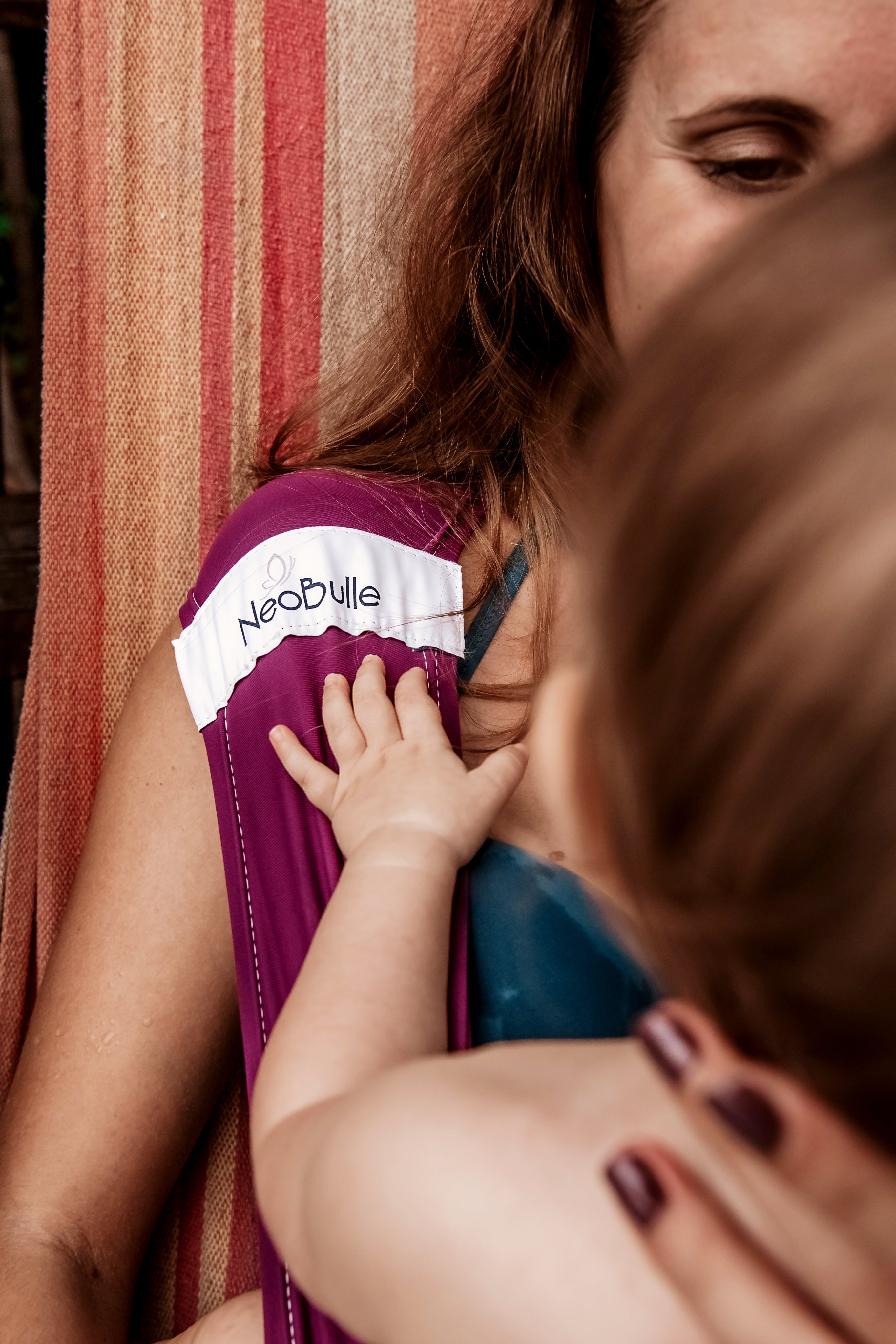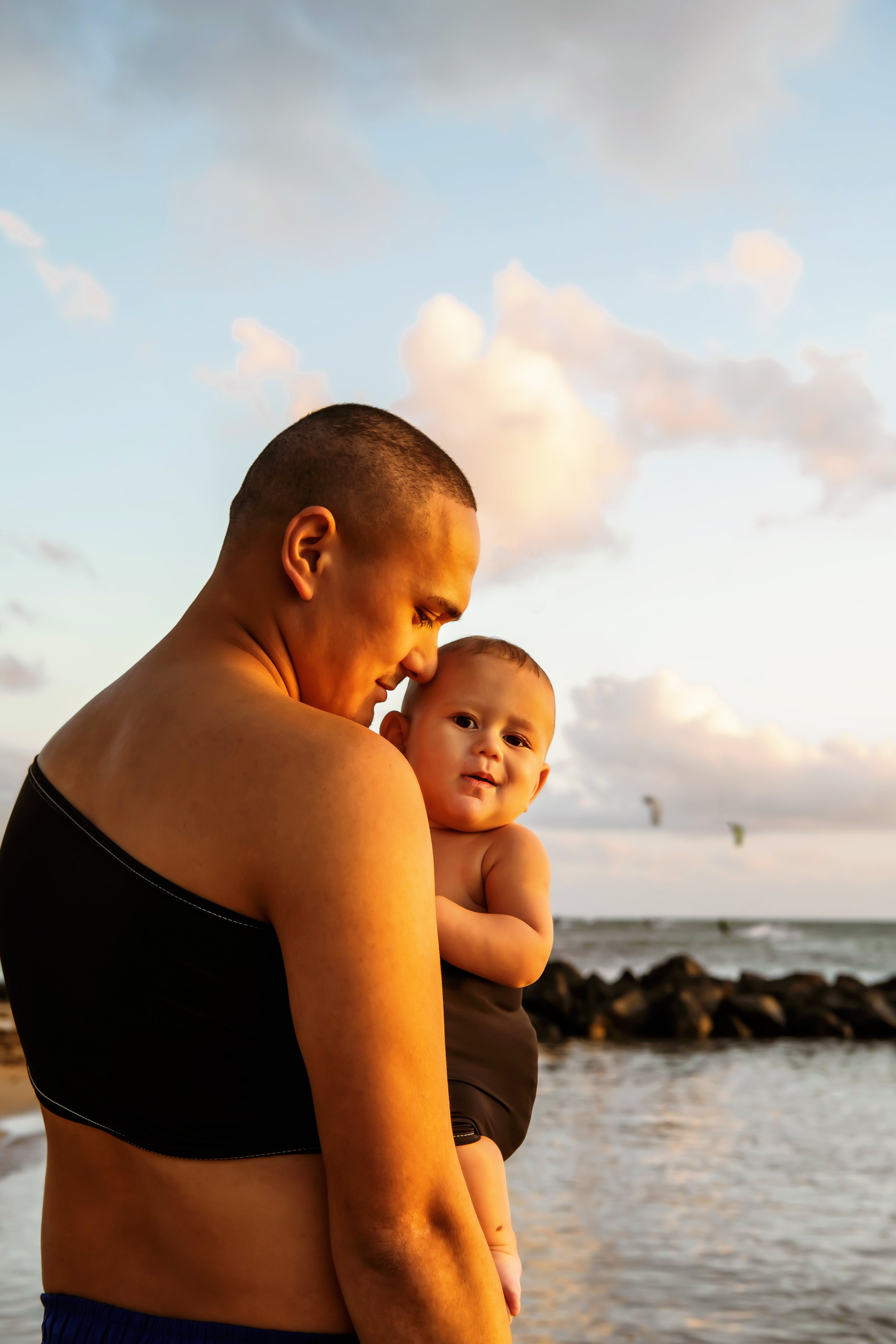
How to choose your carrying method?
Choosing the most suitable carrying method for your needs is an important step for anyone who wants to carry their little baby, whether for daily activities or outdoor adventures. There are many different carrying methods, and we have created 3 diagrams to help you see more clearly. Here are three diagrams to assist you: How to choose a newborn baby carrier? How to choose a baby carrier from 4 months old? How to choose a baby carrier for one year and older?

10 Mistakes to Avoid When Buying a Baby Carrier
Are you looking to invest in a baby carrier but don't know how to choose? From price to online reviews, the number of carrying positions, and recommendations from friends, this article is here to help you sort through the questions you need to ask yourself before purchasing. 1 – Respect for physiology Let's start with the basics: respecting physiology is one of the criteria to keep at the top of the list! It impacts both your comfort and that of your baby . The carrying system must be flexible to respect the natural curve of the baby's back , allow him to be grouped with his knees higher than his hips, and promote body-to-body contact and proximity . Beware of ambivalent mentions of the "ergonomic" type, which are not really in line with true physiology (often slightly wider crotch, but always rigid backrest for example) 2 – Security Another important point: the baby carrier must comply with safety regulations . The main points to check are: Compliance with current standards which guarantee safe manufacturing, strong seams, etc. Textile standards guaranteeing the absence of toxic products in materials (Oekotex for example) The baby must be able to be carried upright with clear airways (no lying position, no material behind the head) 3 – Facing the world The forward-facing position is not recommended in the field of physiological babywearing. Indeed, it is a posture in which you cannot really allow your baby to sit in a squat position without ending up parallel , squashed, or arched because of your chest behind his back. The forward-facing position offers far too many stimuli that your little one cannot handle. And above all, it is a posture in which he is not one with you: he pulls you forward and obstructs your field of vision, thereby increasing the risk of falling with him. Brands offering forward-facing babywearing are responding to a public demand to open babies outwards to stimulate them, but at the expense of safety and respect for their physiology . This is a good way to assess the brand's overall ethics! 4 – The “Swiss army knife” baby carrier Being aware that buying a good baby carrier remains a significant budget, it is very logically tempting to invest in the model that will offer the most possibilities . We will then look for the baby carrier that allows carrying from birth to 4 years, in front and back, adapted to the mother of 1.50m but also to the father of 1.95m, which is practical and quick to install but comfortable, suitable for both everyday use and hiking, breathable in summer but warm in winter and which protects from the sun, wind and rain, and if it could also make coffee that would be perfect ! Consider a newborn, a one-year-old, and a four-year-old, and see the enormous disparities in their sizes, weights, motor development, and needs. No baby carrier can perfectly meet such different requirements! The same goes for uses , we could compare the baby carrier to a pair of shoes, we will not use the same pair depending on whether we want to go to the beach, just do a little shopping, or go hiking. It is therefore advisable to target the main need that we will have as well as the age of the baby to be carried, to look for a model that will adapt precisely to these criteria and not to be caught up in the illusion of the baby carrier that does everything (and which in fact does not exist). 5 – Too much simplicity Conversely, a carrying system sold as too simple should always be questionable. What has been cut to simplify its use ? Can the system still be properly adjusted to the size of the wearer and their baby? One-size-fits-all systems without any adjustment will never provide you with a satisfactory carrying experience ; they will always be too big or too small , leading to questions about the safety of their use. 6 – Anticipation of needs As we saw in point number 4, it is important to target our desires and constraints to choose the model that will be the most suitable. Be careful, however, not to anticipate too much! No one can know how it will wear 6 months or 1 year later and the risk is to make a choice that will not suit the needs of the present moment, nor later , and from which you will not benefit. Choose according to the needs you know, in order to fully enjoy these sweet moments with your little one and make the experience as pleasant and helpful on a daily basis as possible. 7 – Advice from friends and other internet comments Your friend whose baby is a few months older than yours assured you, " the Model X is gen-ial " and she swears by it! But on the internet, the Model Y also seems to be well-rated and has lots of good reviews. Who to believe? No one. Choosing a baby carrier is extremely subjective . It depends on the sensations you like and your body shape (preformed carriers have different cuts depending on the brand, for example, like clothes ). The Model X may have suited your girlfriend perfectly, while you will be terribly uncomfortable in it. Online reviews are also biased because they are rated by people who are mostly just as new to the subject as you are and will not have been able to try other systems to have points of comparison. Would you be as satisfied with the comfort of your 2CV if you had also tested a Mercedes before choosing? 8 – The price Quite counterintuitively, price is not necessarily a good selection criterion . While a low cost should indeed alert you to the overall quality and place of manufacture of the product, a high cost does not guarantee that the model is comfortable, physiological and safe! 9 – The soft textile Your baby seems tiny and fragile, and you dream of wrapping him in a cocoon of softness. Your choice might then fall on a very soft sling, so pleasant to the touch. But your cute, tiny baby will soon grow up. He's expected to gain about 1 kg per month and quickly start to kick more vigorously! A material barely thicker than a bodysuit or pajamas will quickly become difficult to handle and unusable in good conditions (we are looking for a baby carrier and not an item of clothing). A firmer fabric poses no problem on a newborn and will provide more lasting comfort. 10 – The baby carrier that stays in the closet Last but not least: the best baby carrier is always the one you REALLY see yourself carrying your little one in! While the baby sling is often cited as the ideal system, if you're not comfortable with it staying at the bottom of the closet, the benefit will be very limited. As long as the system is age-appropriate and safe for your baby , the main thing is that you are comfortable with it and comfortable using it. In short, choosing a baby carrier is very subjective and personal. Take the time to assess your needs and constraints, and don't hesitate to contact a baby carrier instructor for more specific advice, to try out different models, and to learn how to use them! Comparison of Néobulle preformed baby carriers
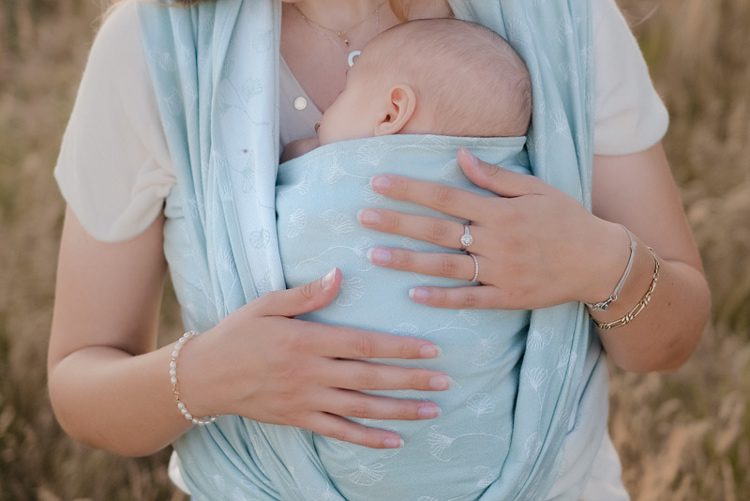
How to properly carry your baby?
You're expecting a baby or have just given birth, and you'd like to try babywearing, but you're not quite sure where to start (with the sling) or how to go about it. And the more links you read on the internet, the more lost you feel! This article is here to help you sort things out and start babywearing calmly. 1 – What is physiological babywearing? You have probably read this term at least 52 times, but what exactly does it refer to? We talk about physiological babywearing when it respects the natural posture of the little one. The main criteria to keep in mind are as follows: Rounded lower back: the spine of the newborn is naturally rounded, unlike that of an adult which forms a kind of S, it tends to form a slightly stretched C (like a comma). An upright back position corresponds, in terms of comfort, to an arched position in an adult, which can quickly become uncomfortable Knees higher than hips: raising the knees allows the baby to sit well into the hip socket and provides better comfort. To illustrate a posture that does not allow for grouping, you can think of sitting on a tall barstool with legs hanging down. These two criteria are of course to be considered in a very overall way. When the child grows, for example, their spine will gradually evolve to reach, around 18 months / 2 years, the shape we see in adults. From a newborn often very curled up, you will observe less and less pronounced rounding over the months, especially as the child wakes up and moves around. Some children are also more tonic than others and will not let you raise their knees higher than their hips, especially common in babies suffering from gastroesophageal reflux (GERD). This should not become a barrier or a source of stress; your baby does not face any risk of injury or poor development if they are not carried in a perfectly physiological way, the main thing is that they are carried and that it helps you in daily life. 2 – Your first babywearing system: your arms It is often overlooked, but your first babywearing tool is your arms! Before even considering using any baby carrier, it seems quite logical to start with the basics: being comfortable with handling your little one. It is recommended to handle your baby respecting their natural wrapping (see point number 1), we will ensure to limit traction and hyperextension postures. This involves avoiding especially lifting the baby by the armpits, preferring for example to first sit him down and then support him by the hips. Supporting your baby's pelvis provides comfort and stability; its base acts as a center of gravity. This reassures and calms him, and also makes handling him easier for you. For your comfort, you can prefer using your forearm as support instead of your hand: when carrying with your hand, you tense up enormously, which promotes tension even in the neck and can lead to wrist tendinitis. Moreover, the hand that carries between the baby's legs invites him to lean backward, which is the opposite of the desired effect. Generally speaking, don't hesitate to use your entire arm and torso to provide a good anchor for your little one without overloading your joints. Remember that when the child reaches 6kg (around 3-4 months), it’s equivalent to carrying a milk pack for several hours a day! Protect your body daily as it is essential from the start. Take the time to find areas on your torso where your baby fits perfectly (body fitting), then adjust the carrier at these points to prevent the head from tilting backward. 3 – Choosing the baby carrier Choosing your system is often the most difficult step! Wrap, sling, mei-tai, preformed carrier, do these words seem like Chinese to you? Don't panic, that's normal. It is true that the market has developed much faster than the usage instructions, and it’s easy to get lost! We invite you first to read our article on the 10 mistakes to avoid when buying a baby carrier, which can give you some useful tips on the subject. To simplify things a bit, we suggest you first evaluate your main need: are you considering practical carrying for home, quick errands or school runs, or rather longer duration carrying for baby naps or walks? The most practical systems are generally slings and preformed carriers . They settle in very quickly, don't drag on the ground, and allow you to immediately carry the baby. The most durable systems are generally the carrying wraps and the mei-tai. They require a bit more time to set up and adjust properly, but they allow for long-term carrying in the best conditions. Practicality and comfort unfortunately tend to oppose each other : the more we want a practical system, the fewer adjustments and settings it will have, and the less comfortable it will be (at least it will remain comfortable but less than others). Being comfortable will instead require a bit more manipulation, which doesn't really match ultra-fast setups. We could compare the wrap to a pair of hiking shoes and the sling to a pair of flip-flops : both are useful but not at the same time ! And just as we wouldn't walk long in flip-flops, we wouldn't wear hiking shoes to go pick up the mail. Do you want to carry both in daily life and during walks ? Rely on 2 different systems to get the best benefits ! 4 – Safety You have your arms, your baby carrier, your baby, and are well prepared for carrying, bravo ! Now let's talk about safety. The safety rules for carrying are quite basic : Baby vertical and facing you : lying in a system, it risks sinking and the fabric can limit good air circulation, these positions should be reserved exclusively for carrying in the arms. Facing outward is also to be avoided (increased risk of falling). Clear airways : your baby's head must always be free, with the carrier and covers pulled up high behind the neck. Is it cold ? Put a hat on! At worst, it's always better to have a small draft than a baby who can't breathe anymore. Clear airways also mean checking that the baby isn't sagging into the fabric: you can pass a finger between their chin and their chest. High carry on the chest : a too-low setup will tend to be too loose, and your baby might get squished. Well-adjusted baby carrier : the fabric wraps around your little one, the adjustments support them, and they can't slip underneath or fall. No sports activities : no running, cycling, skiing, or trampoline with the baby carried! Other important rules can also be added, even if less essential : Flexible clothing that doesn't hinder the baby. Whether in carrying or on the ground, favor loose and non-restrictive clothes; no one would nap or do yoga in slim jeans or a wedding dress, and neither would your baby ! No coat or snowsuit : it is better to keep your little one as close to you as possible to promote thermoregulation. Thick materials hinder proper adjustments, tend to obstruct the airways, and press on the femoral artery, impairing blood circulation in the legs. Cover him from the outside with a carrying blanket or a coat, for example. Regular short breaks so that baby can move a little, ideally every 2-3 hours (which is convenient, as he will generally demand to suck or need his diaper changed around the same rhythm!). In summer, also remember to keep him well hydrated! Generally, regularly check that everything is OK during carrying. 5 – Choose the right moment Classic beginner mistake: "Baby is crying! Hmm, what if I put him in the sling I’ve never used in my life?" Equivalent: "Hey, shall we go take the first driving lesson at Place de l’Étoile in Paris?" You see, it’s a very bad idea! Even for an experienced carrier, installing a newborn in a remake of The Exorcist in a baby carrier is a delicate exercise. Aim for a moment when everything is OK: baby is calm and fed, you yourself are calm and unconstrained (appointment or other). The first setups are not meant to satisfy a need for carrying but a need to LEARN how to carry. In practice, it’s quite common for baby to cry during installations; this doesn’t mean he doesn’t like carrying but rather that he doesn’t like the setup in the carrier, which, let’s admit, is not the most pleasant step for him. Don’t hesitate to go all the way as you can (this is not the time to aim for perfect adjustment), walk to calm him down, and then revisit the adjustments afterward. 6 – Enjoy! That’s it, you’re finally ready! The main thing now is to enjoy these sweet moments with your little heart! Take your time to learn calmly and without pressure, aiming for reasonable goals at first: a baby who breathes and doesn’t fall. Ease and comfort will come gradually over time. Don’t hesitate to also get support from a carrying instructor! Happy carrying!
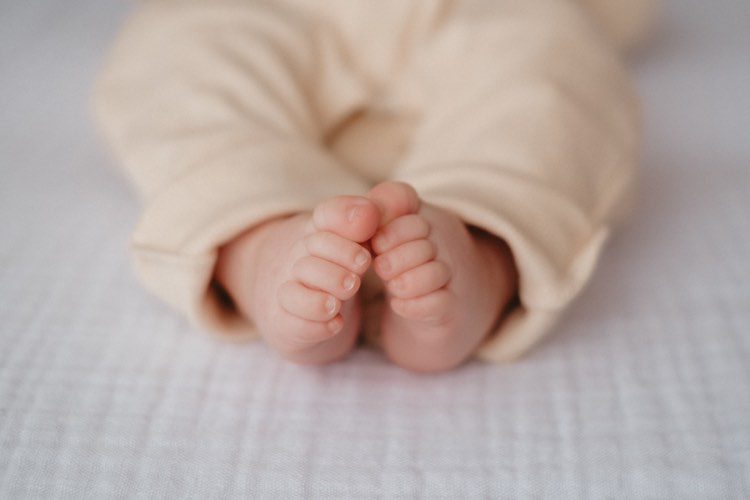
Essential care for baby
Everything is ready, the nursery, the cuddly toys, and the bag for the maternity hospital… All that's left is to go! And the day of the big meeting arrives! We are amazed by this little bundle… by so much perfection. These tiny fingers with tiny nails at the tips, so delicate… And happiness fills us, we already know each other while discovering ourselves… Breastfeeding begins and sometimes comes with minor tummy troubles: small cries, a tense belly, knees drawn up… Ah ah ah… little colics? That's when I remember that grandma Lison offered me a magical box, she said! Everything for baby’s little bumps, natural and organic herbal potions. I discover Calm Bidou, full of promises just in the name! A tummy massage and sometimes just applying it on the lower back, just above the buttocks, and I see that it soothes quickly. So it becomes a ritual during the first weeks, giving the little intestines time to properly establish their function too! Now, two months have passed with life gently flowing with baby, the routines are taking shape, the rhythm is gradually emerging… It’s time for his big brother to go to school, and here, after two weeks, his nose is running and of course, he transmits some germs to his little sister… And now his nose starts running too… grrrr! Let’s check the magical box from Grandma Lison… Achoo! In addition to nasal irrigation, here’s a new ritual: chest massage or foot sole massage (which is easier depending on how many layers of clothing are on to reach the area 😉). In four days, it’s resolved! Phew! Second challenge, boo-boo overcome! They don’t always tell us everything… But since it’s winter, I continue with one application per day under his little feet, a comforting massage that also helps strengthen his natural immunity to block future runny noses! Six months later, it’s no longer the adorable little baby who doesn’t move… she’s making herself heard! But now, we hear her much better: grumpy, red cheeks, drooling everywhere… I sense the third challenge looming, and not the least: teeth! This is serious business! Disrupted sleep, inconsolable baby… I give a chilled rattle, it helps but it starts again, I need to rotate wisely, always have some ready, a real race against time! Hey, First Teeth … I had forgotten the magic box offered by Grandma Lison… and here it is really magical! Immediate relief. A drop on the finger (so practical to put on) and my finger massaging the gum (and sometimes getting crushed by the pitbull marchers of Miss), several times a day, and you can really feel that it does good! We don’t quite get through it… The first tooth cuts through after a few days, with the smile and sleep restored! This product is so great, it relieves pain, softens the gum, and allows the little teeth to push through in relative calm… 9 months… "Look darling, she’s really gotten the hang of crawling, she’ll be walking soon!" But don’t expect everything… and bam… the table leg right in the forehead and the first bump! This time all the magic sticks are ready to draw—Bam! I just put it on the emerging bump and the magic again… Baby relieved resumes exploring, and miracle—after a few hours, the bump diminishes after two applications, and not even a bruise! It remains to test the Little Bobo (the second emergency stick from the magic box offered by Grandma Lison)… And it was his big brother who gave it to him a few days later by falling flat on his stomach at the square: screaming "maman…", scraped knees, tears streaming down his cheeks… With my square nurse diploma in hand, I take out a small tissue to wipe the gravel and my Little Bobo roll because it doesn’t sting, it relieves, cleans, and PLUS, he can put it on all by himself like a big kid! This also greatly limits the tears!!! Little Bobo and Bam-Bam will become essentials in my bag and on our outings because bruises, bumps, small burns, blisters, and scratches won’t last long! So thank you Grandma Lison for introducing me to magical herbal potions to soothe my two mischievous treasures because we are quite unprepared for these everyday little injuries… unfortunately, we don’t have parenting classes to manage all the hazards of our new role 😊! And it’s still much better to work with natural resources when possible… especially when you see how well she made the tiny fingers of our little one… https://www.youtube.com/watch?v=BQE5Wr4XvVc
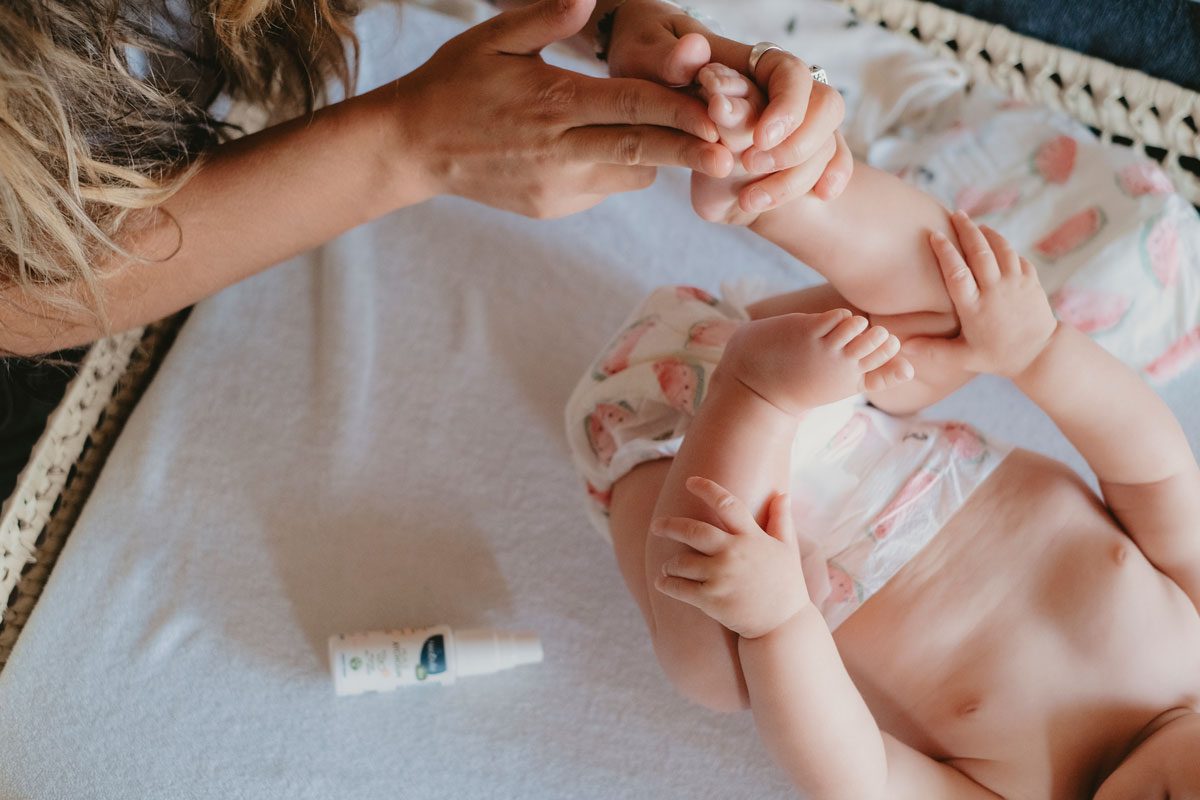
Winter and baby, how to boost their natural defenses?
Antivirals, antinfectious agents…essential oils are particularly effective in fighting winter ailments. They are excellent allies to help the body fight viruses and other illnesses. Especially in children and babies, some essential oils are very useful and help strengthen the immune system naturally and safely. They can be applied as a chest massage or on the soles of the feet. However, always be careful to use them diluted and properly dosed! Ravintsara essential oil is a powerful antiviral and is remarkable for stimulating the immune system. Remember to use ravintsara essential oil whenever you want to boost natural defenses. Linalool thyme essential oil is an anti-infectious. Linalool thyme is the gentlest of the thymes for fighting all kinds of infections in the most sensitive, especially respiratory infections (rhinitis, rhino-pharyngitis, bronchitis, etc.). Eucalyptus radiata essential oil is the useful essential oil for decongesting the upper respiratory system and also has an immune-stimulating effect. Well tolerated by the skin, it differs from the very powerful Eucalyptus globulus essential oil, which is not recommended for very young children. Discover our Atchoum care range made in the Loire, utilizing the properties of these essential oils.
Are essential oils endocrine disruptors?
There is much talk about endocrine disruptors, but what exactly is an endocrine disruptor? An endocrine disruptor is a substance capable of interfering with our hormonal system by inducing a harmful effect on health. Critical periods of development where hormonal regulation is particularly important (during fetal development, early childhood, puberty or adolescence, pregnancy), exposure to endocrine disruptors can be concerning. A multitude of substances can be endocrine disruptors, but certain pesticides and plastic components have been found to be endocrine disruptors, such as bisphenol A for example, which is now banned in baby bottles and food containers. A national program to identify endocrine disruptors is underway to regulate them. Are essential oils suspected of being endocrine disruptors? In the media, a scientific study has been reported multiple times, where American researchers demonstrated an endocrine disruption after applying cosmetic products containing lavender and tea tree essential oils. Notably, 60 Million Consumers relayed this study, raising fears and mistrust among consumers regarding these essential oils without any real basis! Since its publication, this study has been cited hundreds of times as a reference for the estrogenic or endocrine-disrupting activity of lavender or tea tree essential oils without additional data. This study has been criticized by many authors on several points and other studies have shown that these essential oils do not disrupt the endocrine system. The SCCS, the Scientific Committee on Consumer Safety of the European Commission, discredited this study itself. Some authors attribute the endocrine effect noted in the American study to phthalates contained in plastics or pesticides that may have contributed to the effect. And what about Neobulle products? At Neobulle, we pay close attention both in the choice of ingredients and in our packaging choices. We select high-quality and organic essential oils. Our certification body, Bureau Veritas, regularly conducts tests on our finished products to check for the absence of pesticides. We choose packaging free of phthalates for plastics or made of glass with good chemical resistance. We remain very attentive to the evolution of techniques and scientific research in this field.

Essential oils, pregnancy, and baby: Tips, precautions, and benefits
Essential oils have been used for centuries for body and mind care. Very active, their use must be supervised to avoid any toxicity. When well-chosen and used under the right conditions, they provide us with all their benefits, naturally. Sensitive individuals should observe precautions for use with essential oils, such as pregnant or breastfeeding women, infants, and children under 6 years old. It is important to avoid self-medication with essential oils and to consult a knowledgeable specialist, or to use finished products formulated and dosed specifically for this audience. What is an essential oil? Essential oils are obtained from the water distillation of aromatic plants, a process unchanged for millennia. True fragrant concentrates, essential oils are very active and contain more than a hundred compounds. Aromatherapy is a traditional therapeutic method that uses essential oils, involving a deep knowledge of their properties, contraindications, methods of use, and how to combine them. What are the benefits of essential oils? The different active compounds of the plant concentrated in the essential oil work synergistically. They have many diverse properties: antimicrobial, antispasmodic, soothing, insect-repellent, etc. In addition, essential oils provide a mental well-being dimension through olfaction. Essential oils have numerous benefits for our body, health, and well-being: They allow to: Relieve pain: if only one had to be mentioned, it would be lavender essential oil (widely used in Neobulle products) for its healing, antiseptic, or antispasmodic virtues. It is essential for the skin (burns, etc.), or to reduce spasms, muscle pains, etc. Boost energy: citrus essential oils, for example, are suitable for restoring tonus or reducing stress Alleviate mental fatigue: with their direct action on the nervous system and their relaxing virtues, essential oils like marjoram or petitgrain help overcome temporary depression There are countless benefits!!! What precautions should be taken? As you may have read (check if you are following), essential oils are very active. They must be used with caution to avoid toxicity. Powerful, some can be irritating, cause photosensitization, be neurotoxic, or even abortive... Conversely, when rigorously selected and used under proper conditions, essential oils provide us with their wonderful and numerous benefits! Can essential oils be used during pregnancy and in babies? Only a small number of essential oils can be used. The dosage of essential oils is crucial; it must be precise for maximum effectiveness and complete safety. A rigorous selection process for essential oils is essential to guarantee their quality and safety: botanically defined plants, well-identified geographical origin, certified organic cultivation, physicochemical characteristics, and well-defined composition. In summary, "YES" essential oils can be used during pregnancy or to meet the needs of babies, but with precautions, favoring vegetable oil synergies — pre-formulated and ready-to-use essential oils, or consulting an aromatherapist. Neobulle products offer a range of adapted and well-identified aromatherapy products by age for easier use and to benefit from the superpowers of plants!
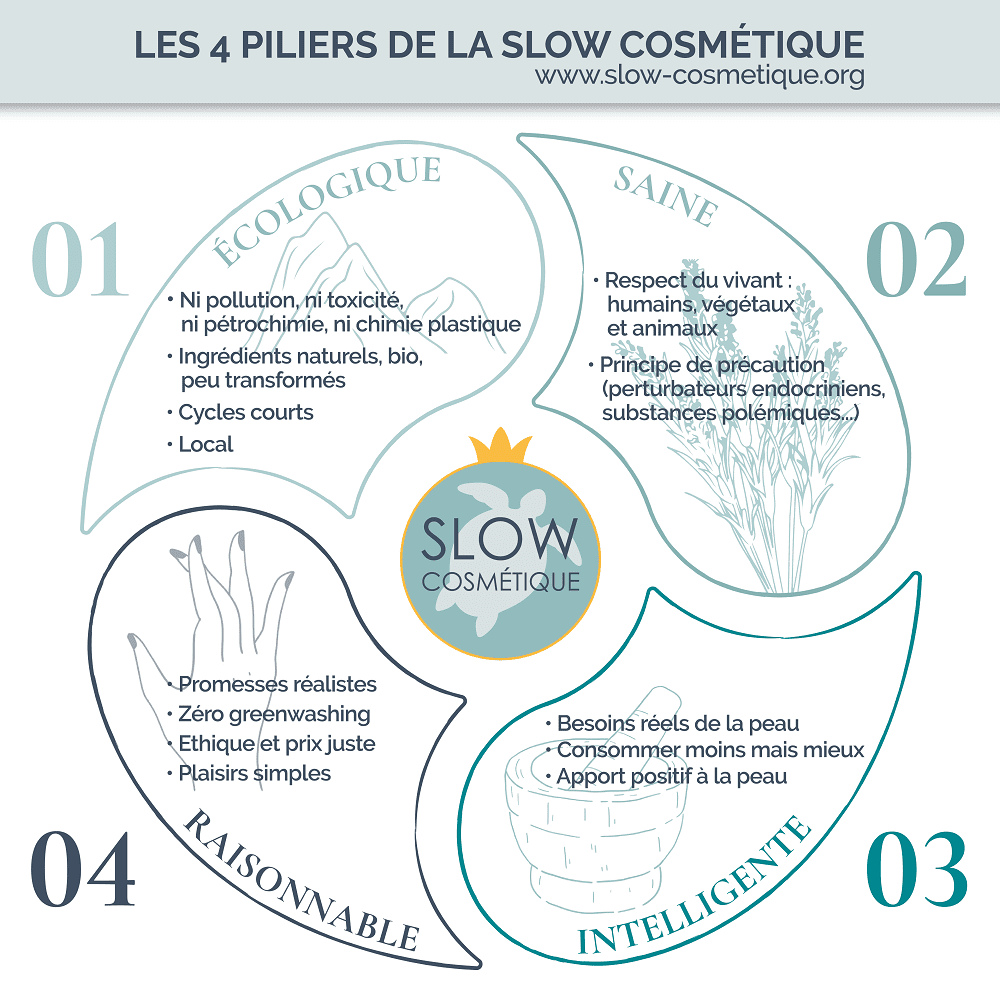
Slow Cosmétique, what is it?
The Slow Cosmétique label is a movement for a more reasonable and ecological cosmetics, a label that promotes healthy and environmentally respectful products but also simpler and more reasonable in their marketing. Slow Cosmétique represents family businesses rooted in their territory. It is an independent label that cares not only about the formula but also about ethics and more reasonable marketing. How to obtain the Slow Cosmétique label? The label is awarded to brands that best meet the 4 pillars of slow cosmetics: The Slow Cosmétique team has identified us and we have put together a file! This file and our products were then analyzed by an expert jury and a consumer jury. A scoring system allows obtaining a final score, and a deliberation by "the council of wise men" composed of experts is ultimately carried out. We finally obtained the label for our entire brand to highlight our approach and philosophy of offering increasingly healthy, authentic, and locally rooted products! To learn more, you can find the entire process on slow-cosmetique.org
How to relax during pregnancy?
Serene and relaxed during your pregnancy As we know that pregnancy is sometimes made up of questions, small moments of depression or rollercoaster emotions, here are some tips to follow for a serene pregnancy. One rule only: 0% guilt and 100% pleasure! Shall we go? The "feeling good in your body" trick Sophrology, prenatal yoga, haptonomy or even swimming are all techniques for preparing for childbirth that bring well-being, serenity, and vitality. Whatever stage of pregnancy you're at, remember that they are always accessible. The "creative feather" trick Writing down your emotions in a pregnancy journal can be very beneficial. Note the small (or big) daily joys. Project yourself into the future with baby. Your projects, your desires. The great adventure you are living. A nice notebook. A pencil. Be positive. Everything is said! The "pampering" trick A little visit to the beautician? A manicure appointment? A hairdresser stopover? How nice it is to be pampered. Take this opportunity to relax and unwind. The "total relaxation" trick A massage from your loved one with the magic Well-being oil from Néobulle, for a pure moment of relaxation and comfort, which will fill you with pleasure. A pleasure that baby will also feel. Relaxation as seen by Néobulle We have created an entire Relaxation range to accompany you with serenity during stressful moments. Discover your future relaxation allies here
